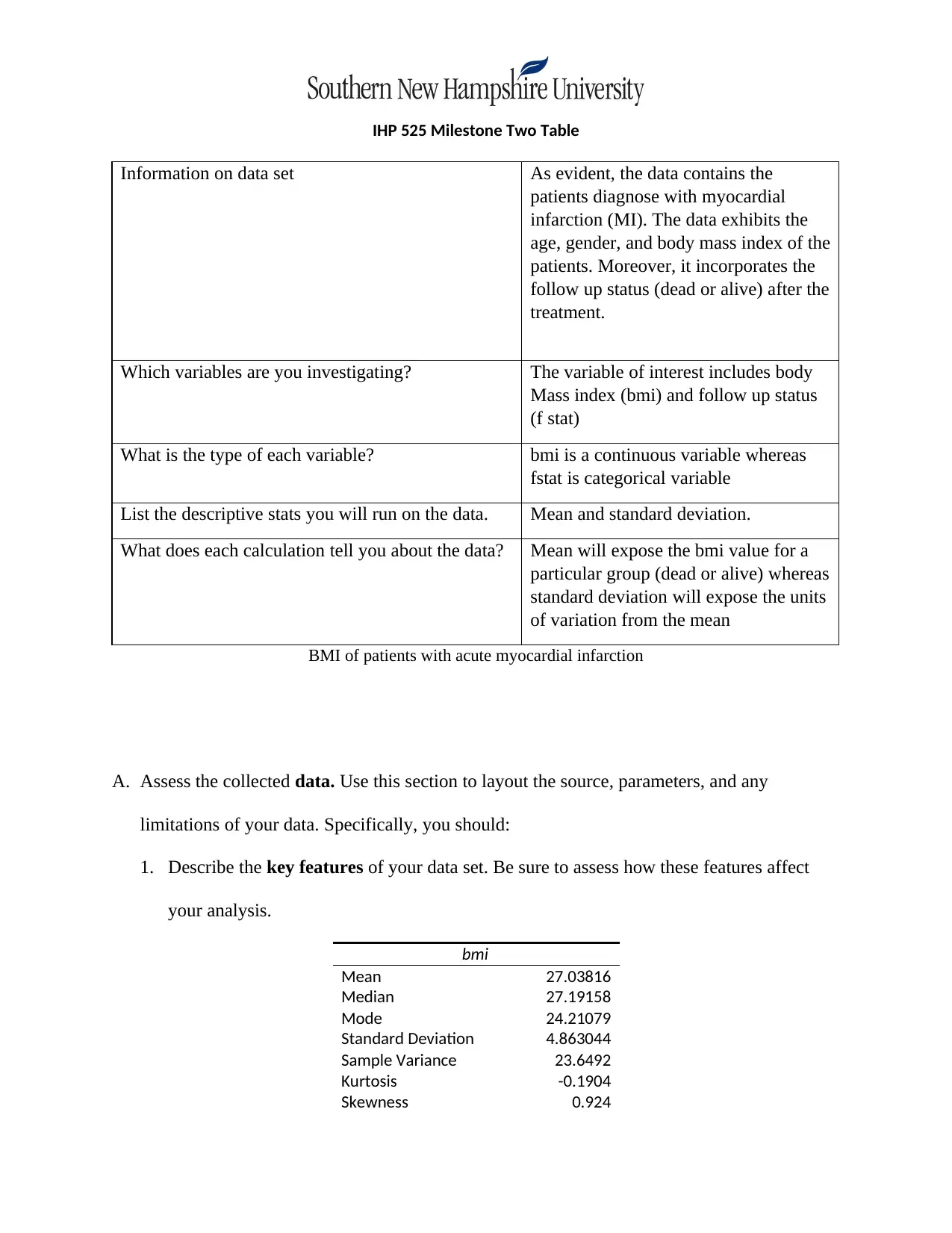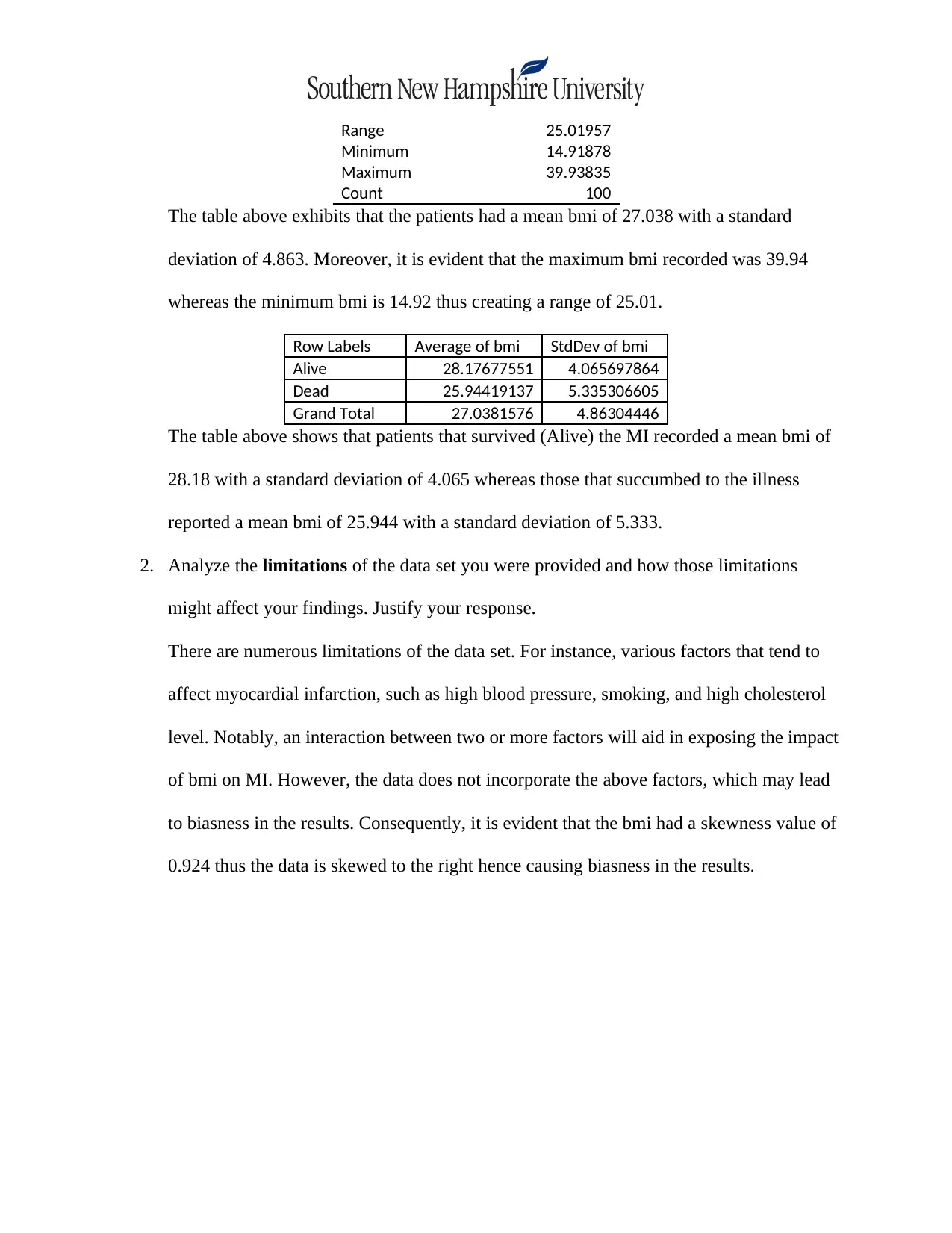IHP 525: Milestone Two - Analysis of MI Patient Data Set
VerifiedAdded on 2022/08/20
|2
|467
|46
Report
AI Summary
This report presents an analysis of a dataset concerning patients diagnosed with myocardial infarction (MI). The data includes patient age, gender, BMI, and follow-up status (dead or alive) after treatment. The study focuses on the relationship between BMI and follow-up status. The variables' types are identified, and descriptive statistics, including mean and standard deviation, are calculated to understand the data's central tendency and variability. The analysis assesses the dataset's key features, such as the mean BMI, standard deviation, range, and skewness, and presents these statistics for the overall patient population and for subgroups based on follow-up status. The report also acknowledges and discusses the limitations of the data, such as the absence of factors like blood pressure and smoking history, which could influence MI outcomes, and the skewness of the BMI data, which might introduce bias. The report highlights how these limitations could affect the interpretation of the findings.
1 out of 2



![[object Object]](/_next/static/media/star-bottom.7253800d.svg)